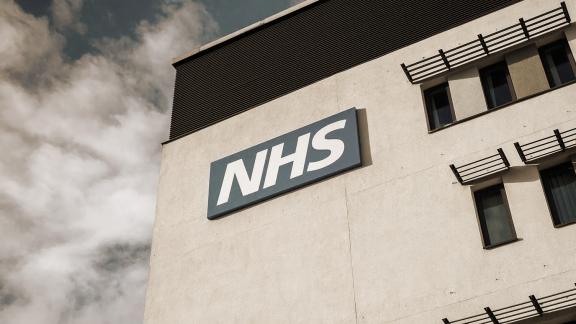The journey of NHS pay over the last decade

Over the last ten years, we have seen continuing increases in levels of pay in both the public and private sector. In 2021/22 the NHS spent a total of £66.2 billion on staff wages, which equates to 45.2 per cent of the total NHS budget.
As of November 2022, for all 1.26 million staff under the NHS terms and conditions of service, the wage bill contributes to a large proportion of this. The table below shows how the NHS pay bill has increased since 2013.
| Year | Total NHS spend (£bn) | NHS staff spend (£bn) | Increase in total spend |
| 2013 to 2014 | 93.4 | 42.9 | n/a |
| 2014 to 2015 | 97 | 43.9 | 3.57% |
| 2015 to 2016 | 100.2 | 45.2 | 3.28% |
| 2016 to 2017 | 105.7 | 47.7 | 5.49% |
| 2017 to 2018 | 109.5 | 49.9 | 3.63% |
| 2018 to 2019 | 114.4 | 52.6 | 4.46% |
| 2019 to 2020 | 120.5 | 55.6 | 5.35% |
| 2020 to 2021 | 140.6 | 62.7 | 16.63% |
| 2021 to 2022 | 146.5 | 66.2 | 4.21% |
Source: Department of Health and Social Care NHS PRB evidence 2023/24
To illustrate this further, any increase in pay for these staff would make a considerable impact to the total pay bill cost. Each 1 per cent uplift to all pay point values on the NHS terms and conditions of service pay system, would see total pay bill costs increase by £571 million. Each £500 uplift to all pay point values in the pay system would see total pay bill costs increase by £897 million (1.81 per cent.)
Below we explore how pay in the NHS has changed between 2013 and 2023. How this decade has affected our NHS people will depend on their individual circumstances for instance, their pay position at the start, their career path and their access to pay progression.
Workforce trends
When analysing and developing a pay and reward system, it is important to look at how the workforce has changed over time. Below we explore some key workforce trends between 2013 and 2023.
Pay structure
Agenda for Change was introduced in October 2004 to provide a unified grading and pay structure for non-medical jobs in the NHS, which had previously been covered by multiple systems (leading to equal pay risk and challenge).
From the outset, there were nine main bands, with band 8 further subdivided into four levels (8a, 8b, 8c and 8d). Each band was aligned to a pay range based on spine points, providing the opportunity for incremental progression, subject to meeting criteria. This approach to pay structure is similar to local government, all levels of the education system, policing and some other public services.
The NHS terms and conditions has seen a number of alterations to pay structure, particularly in 2018 as part of the three-year pay deal. Below we highlight what the main effects were as a result of the restructuring:
Pay increases and pay progression
One source of NHS pay movement comes from the national pay increases. The table below highlights that over the ten-year period the total increase has been 23 per cent, highlighting the level of investment that has been made into NHS pay. In 2008 and 2009, we saw the financial crisis hit worldwide. The private sector was able to recover quickly, but the public sector was hit badly, followed by several years of zero per cent national settlements.
National settlements in the NHS between 2013 and 2023
| Year | 2013/14 | 2014/15 | 2015/16 | 2016/17 | 2017/18 | 2018/19 | 2019/20 | 2020/21 | 2021/22 | 2022/23 | 2023/24 |
| Increase | 1% | 0% | 1% | 1% | 1% | 3% | 1.7% | 1.57% | 3% | 4.75% | 5% |
| Comment | - | - | - | - | - | Multi-year pay deal covering 2018/19, 2019/20 and 2020/21 | - | +Cash | Band 2 spot salary | ||
Over the decade the NHS pay structure has seen a number of changes to the levels of pay at the minimum and maximum of each band.
Changes in AfC minima and maxima from 2013/14 to 2023/24
| Band | 2013 minimum | 2023 minimum | Percentage change | 2013 max | 2023 max | Percentage change |
| 2 | £14,294 | £22,383 | +56.6% | £17,425 | £22,383 | +28.5 |
| 3 | £16,271 | £22,816 | +40.2% | £19,268 | £24,336 | +26.3% |
| 4 | £18,838 | £25,147 | +33.5% | £22,016 | £27,596 | +25.3% |
| 5 | £21,388 | £28,407 | +32.8% | £27,901 | £34,581 | +23.9% |
| 6 | £25,783 | £35,392 | +37.3% | £34,530 | £42,618 | +23.4% |
| 7 | £30,764 | £43,742 | +42.2% | £40,558 | £50,056 | +23.4% |
| 8a | £39,239 | £50,952 | +29.9% | £47,088 | £57,349 | +21.8% |
| 8b | £45,707 | £58,972 | +29.0% | £56,504 | £68,525 | +21.3% |
| 8c | £54,998 | £70,417 | +28.0% | £67,805 | £81,138 | +19.7% |
| 8d | £65,922 | £83,571 | +26.8% | £81,618 | £96,376 | +18.1% |
| 9 | £77,850 | £99,891 | +28.3% | £98,453 | £114,949 | +16.8% |
It is evident to see that:
- the biggest investment due to national living wage threshold increases, cost of living pressures and negotiated increases has gone to the lower graded jobs and least to the highest graded
- more investment has gone into raising entry level salaries for each band (and latterly into shortening the ranges) than into increasing pay at the top of each scale
- the scale minimum has increased in real terms, for instance taking account of inflation, in bands 2, 3, 4, 6 and 7 and has stayed around the same real terms value at band 5. It has fallen in real terms in bands 8 and 9
- the value of the scale maxima of all bands has fallen in real terms
- anyone who has experienced progression through the pay range, or has been promoted in the ten-year period, will have received more than the percentage increases shown in the table.
A second component in pay increases is progression through the salary range. Salary progression depends on individual circumstances, for instance their role and starting point. We have demonstrated this using a number of individual examples below.
Example 1:

A band 5 nurse joining in 2013 on £21,388 will have risen to the top of their scale (subject to meeting progression criteria) and received additional pay uplifts in nine of the past ten years, leaving them – if they are still in the same band – on £34,581 in 2023. This is a cash increase over the decade of 61.7 per cent and a real-terms rise of over 27 per cent.
This is true for all other pay bands, whereby those who started at the bottom of their range in 2013 and have stayed in the same pay band have gained in real terms in the past decade. The increases do vary, with the biggest being in bands 5, 6, and 7.
Example 2:

There will be some roles who have been promoted during this time.
A band 5 midwife who started in 2013 and promoted to band 6 once achieved professional autonomy, would have experienced a salary increase between 2013 and 2023 of 99.3 per cent - or over 65 per cent in real terms – subject to meeting progression criteria.
Example 3:

A band 7 ward manager started at the top of their band in 2013 on £40,558. They remained at the top of their band and received the annual pay uplifts during this time. By 2023 their salary was £50,056. This means that they will have experienced a decline in their pay in real terms of 13.6 per cent (CPI adjusted).
This experience is true for all staff who were at the top of their pay bands in 2013 and remained there.
The composition of earnings
In addition to basic pay, the NHS terms and conditions of service includes provision for the following additional payments:
- unsocial hours
- overtime
- high-cost area supplements (HCAS)
- recruitment and retention premia (RRP).
These payments are a significant and very important part of total earnings for many members of the NHS workforce. The relative importance of these additional earnings varies between individuals and the roles they have. Additions to basic pay form a larger part of the earnings of NHS staff than in other jobs and sectors because it operates 24 hours a day, seven days a week. The closest group in the public sector is police officers at constable and sergeant level. For work carried out in the NHS, additional payments apply to jobs which are higher up the professional ladder than would be common in other organisations or sectors. Most other organisations where shifts and overtime are an issue concentrate those payments in the lower grades.
It is key to recognise all the variable factors that influence an individual’s total earnings and the importance of additional payments on this. Whilst each individual’s circumstance in terms of pay will be different, having a clear understanding of the full remuneration package can aid in attracting and retaining talented healthcare professionals especially in competitive job markets or high demand areas. The NHS competes with a wide range of employers, where skills and experience may be transferable. There is strong competition from other sectors, for example retail and hospitality, where the level of basic pay is the same, however variable pay available to staff can make a substantial difference to an individuals take home pay.
Private sector and public sector comparisons
The way remuneration is composed has always been different between the private and public sectors, but the differences have become greater in the past 20 years and this is down to a number of factors:
| Public sector pay | Private sector pay |
| Rare use of non-consolidated bonuses. | Regular use of non-consolidated bonuses. |
| Bonuses and incentives decreased in popularity. | Bonuses and incentives grown in popularity. |
| Stayed with defined benefit pension schemes. | Moved away from defined benefits pension schemes. |
| Pension scheme employer contribution rates have remained at around 20 per cent. | Pension scheme employer contribution rates decreased from around 20 per cent to 10 per cent or less. |
| High fixed costs – the cost of people is higher (50-80 per cent of total costs) and individual parts (salary, pension and other benefits) are fixed and only change if they increase automatically. | Lower fixed costs – private sector policies and practices are much more flexible. |



